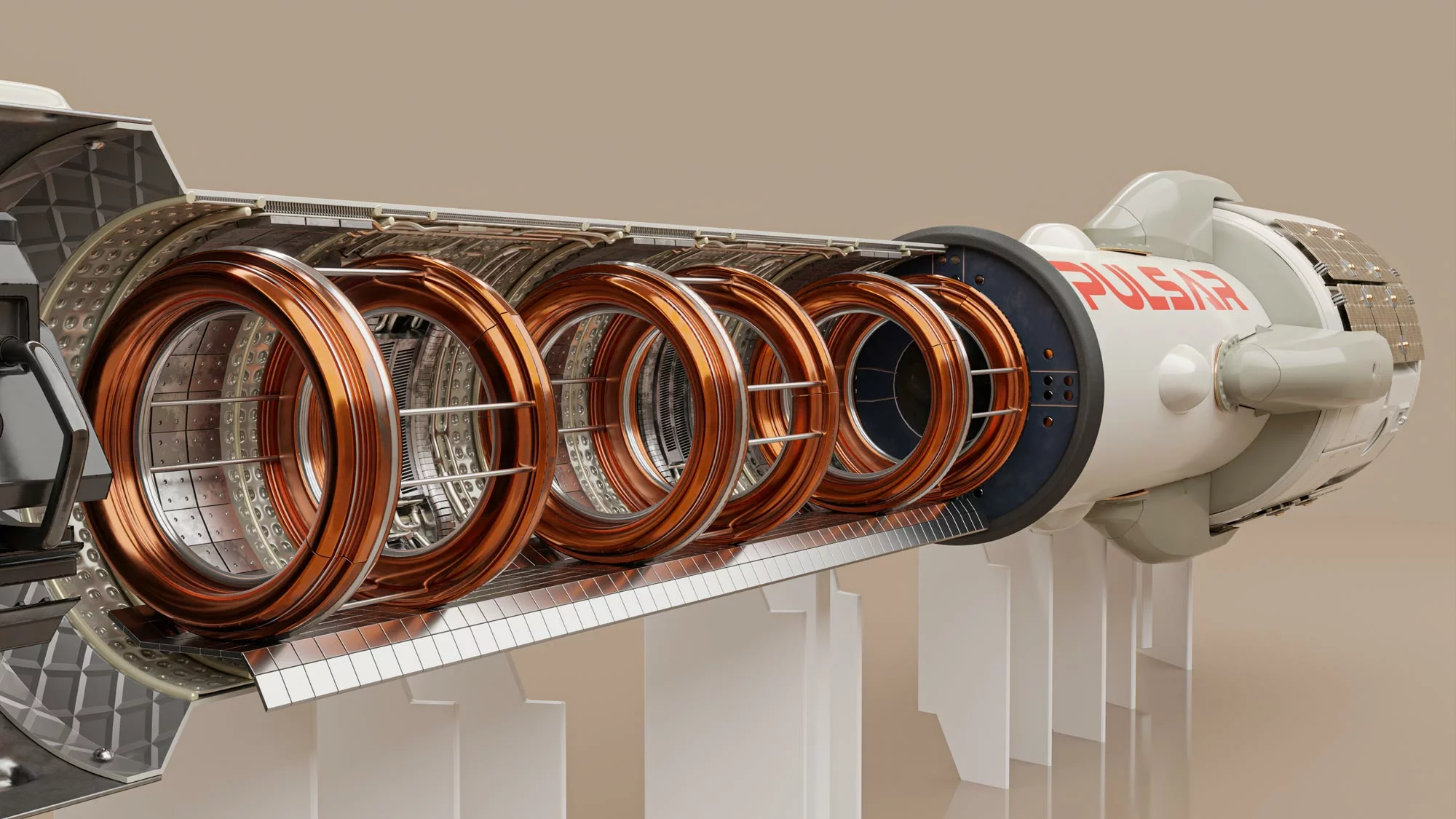 UK-based Pulsar Fusion has entered into a partnership with US Princeton Satellite Systems (PSS) to apply machine learning to study data from the Princeton field-reverse configuration (PFRC-2) reactor. The aim is to advance delivery of practical fusion propelled spacecraft that can make interstellar space travel practical.
UK-based Pulsar Fusion has entered into a partnership with US Princeton Satellite Systems (PSS) to apply machine learning to study data from the Princeton field-reverse configuration (PFRC-2) reactor. The aim is to advance delivery of practical fusion propelled spacecraft that can make interstellar space travel practical.
Pulsar claims that, with fusion propulsion, the solar system is realistically within grasp giving us the ability to travel meaningful distances in space within months and years - not in a lifetime.
In the first study of its kind, PSS and Pulsar Fusion will use data from plasma shots generated using the Reversed Configuration PFRC-2 reactor, which was developed in partnership with the Princeton Plasma Physics Laboratory (PPPL). The partnership will apply the most advanced machine learning technologies to analyse the behaviour of super-hot fusion plasma in a rocket engine configuration. The simulations will assess the performance of nuclear fusion plasma for propulsion as it exits a rocket engine emitting exhaust particles at hundreds of km/sec.
"Humanity has a huge need for faster propulsion in our growing space economy, and fusion offers 1,000 times the power of the conventional ion thrusters currently used in orbit," said Richard Dinan, founder and CEO of Pulsar Fusion. "In short, if humans can achieve fusion for energy, then fusion propulsion in space is inevitable. We believe that fusion propulsion will be demonstrated in space decades before we can harness fusion for energy on Earth."
With Direct Fusion Drive (DFD) rocket propulsion, it would be possible to cut the transit time to Mars, Jupiter, and Saturn and even explore beyond the solar system. For example, there is interest in the potential of life on Titan, one of Saturn's moons, and with a single DFD drive, one can make the trip in two years instead of decades. DFD drives can produce thrust without the need for an intermediary, electricity-producing step. In a DFD system, the fusion reactor generates energy, creating a plasma of electrically charged particles. Those energetic particles are converted to thrust using a rotating magnetic field. DFD drives are ideal for space travel since the energy produced is clean, virtually limitless, and the drive is relatively compact.
"The Direct Fusion Drive is really a game-changing technology enabling us to reach deep space destinations much faster and with vast amounts of power," said Stephanie Thomas, Vice President of PSS. "NASA is interested in a variety of deep space destinations such as getting to Jupiter in one year, Saturn in two years, Pluto in four to five years. A single, 1 MW DFD engine can handle any of those missions. It's a dramatically different way to operate deep space missions that will save time and money and enable us to do more science when we get there."
Pulsar Fusion engineers are developing simulations based on gas puffing data from the PFRC-2. The aim is to create predictive ion and electron behaviour simulations in a field-reversed configuration (FRC) plasma. Accurate predictive simulations are needed for closed-loop systems, a key component for a future PFRC reactor that could be used for rocket propulsion.
Pulsar Fusion has been developing the technology for 10 years alongside the UK Space Agency. Pulsar Fusion was established in 2013 as Applied Fusion Systems. In 2022, Pulsar Fusion was awarded funds from the UK Space Agency to conduct research into nuclear electric propulsion. PSS is an aerospace research and development company collaborating with the Princeton Plasma Physics Lab (PPPL) on a new fusion technology. PPPL is a leader in magnetic confinement experiments utilising the tokamak approach.
Image: Pulsar's concept of a hyper speed, nuclear fusion rocket engine (courtesy of Pulsar Fusion)



